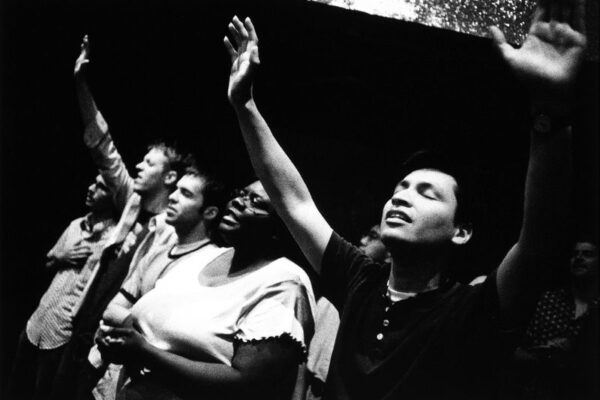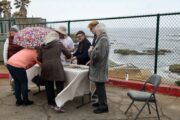The primary question that underlies the Religious Competition and Creative Innovation (RCCI) project is whether “religious competition” leads to creative innovation in congregations and other religious organizations.
This question is rooted at least in part in Sir John Templeton’s proposition that competition between religious groups stimulates innovation, contributing to religious change and development. But it is also the main line of inquiry in a significant stream of research in the sociology of religion. The assumption behind this particular mode of investigating religion is that successful religious groups (which generally means those that are largest or growing fastest) offer better religious “products” to “consumers” in the religious marketplace. This interpretive frame then suggests that the most innovative religious groups—those that respond to “changing market forces” most creatively—are the most successful.
Yet this model of how religious movements work leaves unanswered many other questions: How do congregations and similar groups relate to other cultural forces? How do they formulate their missions in changing social landscapes? How do adherents shape the core tenets and practices that determine the ways that the larger group interacts with the rest of the world?
These “problematizing” questions thus prompt us to ask how competition actually works in the thick of community life and how innovation—changes in essential beliefs or practices or the appropriation of new worship styles or organizational strategies, for example—relates to the underlying characteristics of a given movement. In other words, is “being innovative” a goal of a particular congregation, or does innovation happen as a byproduct of the pursuit of its mission?
More broadly, what effects does innovation have—does it strengthen or weaken the sense of meaning and identity that congregation members derive from their participation, or does it simply serve the organization’s need to survive? What happens when religious groups begin to appropriate the infrastructure of the “innovation industrial complex,” and what is the pipeline of innovation that connects the realms of business and technology to religious organizations? And, finally, is innovation always a good thing for religious movements, or can it lead to bad religious—as well as social and cultural—outcomes?
Admittedly we are at the very beginning of our thinking about these issues, with many more questions remaining to be asked (and, we hope, answered). The answers of course will in large part emerge from our empirical research among congregations in Los Angeles and Seoul.
As we begin to work toward untangling the relationship between religious competition and innovation, and toward understanding the role that innovation plays in the lives of congregations, we have established a regular Monday morning theorizing session, “The Monday Morning Flare,” to think both deeply and broadly (and occasionally crazily) about what we’re observing and to develop compelling narratives to frame our findings. We’ll be posting the most salient discussion points that emerge from our “flaring” as a way to test our ideas publically and to enlist our network of colleagues and supporters in our efforts. In fact, you can send us feedback and recommend innovative congregations here.
Our larger goal in this project is to move beyond the well-worn discourse around the factors that contribute to an increase or decrease in a given religious movement’s “market share.” As my colleague (and former grad school mate) Penny Edgell has suggested, we aim to engage in a “decentering” of discussions of the fate of religions in the modern world and instead develop explanations of religious competition, cooperation and creative innovation that more accurately reflect the everyday experiences of individual believers and the congregations or other religious organizations that attract their participation.
This strategy reflects ongoing evolution in the academic study of religion that manifests mainly as a shift from a focus on institutions to an investigation of “lived religion” among adherents of movements that are constantly shaping—and being shaped by—other religious movements as well as other cultural forces. With this in mind, we believe the RCCI project’s close attention to what religious innovation looks like “on the ground” will ultimately produce work that is useful for anyone who wants to understand the future of religion—in L.A., Seoul and beyond.
Richard Flory is the executive director of the USC Center for Religion and Civic Culture.








